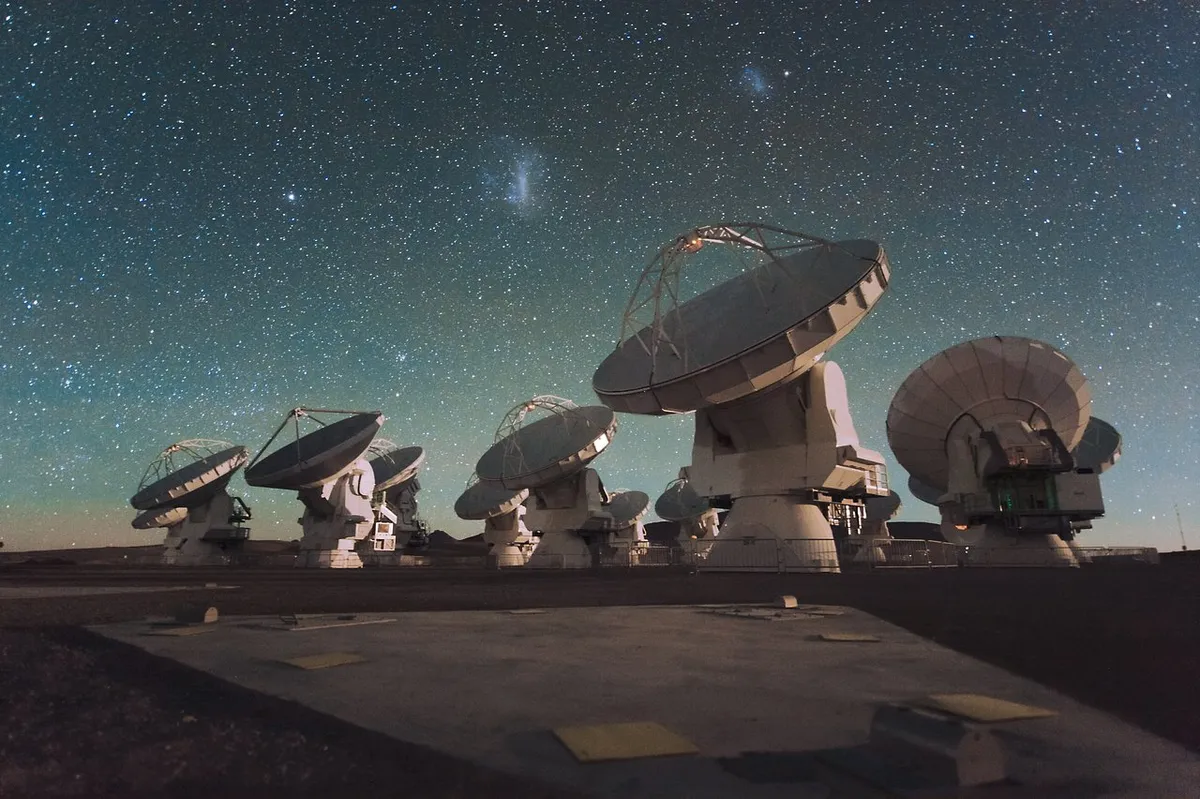We think we understand star and planet formation. Clumps of gas and dust collapse under their own gravity to create a central star. This is surrounded by a disc of leftover material from which planets eventually form. Simple?
Well, new observations are beginning to show just how oversimplified this textbook picture may be. Take the young star RU Lup, the subject of a paper from Harvard University’s Jane Huang and colleagues.
We know from previous observations that a substantial disc surrounds it, but these images can’t tell the whole story. Much of the disc is made up of cold gas, mostly molecular hydrogen, which can’t be easily seen.
Read more from Chris Lintott:
Instead, the team used the ALMA (Atacama Large Millimeter/submillimeter Array) to look for emissions from carbon monoxide, another common molecule, and the extent and complexity of what was seen took them by surprise.
The carbon monoxide disc is large, stretching out to 120 astronomical units from the star (for comparison, that’s four times further than Neptune is from the Sun).
In this region, the gas disc is what astronomers call Keplerian – the gas moves in its orbit just as planets would, following Kepler’s laws of motion.
There’s more material further out, reaching all the way to 260 astronomical units, but this doesn’t rotate with the rest of the disc.

Vast clumpy arms
Outside this ‘envelope’, things get really odd. There is more gas and it is arranged into a series of clumpy spiral arms.
The arms aren’t well defined – the paper notes that several different patterns could easily be drawn – but they’re there, and they seem to reach out to about 1,000 astronomical units.
That’s about 150 billion kilometres! There are also clumps of gas that lurk out here, apparently not connected to the arms.
All of this structure makes RU Lup a textbook example of astronomical complexity. Viewed in those earlier images, it seemed simple: a nice disc on its way to making a solar system.
Tune in to carbon monoxide, though, and all of this unsuspected complexity jumps out. So what’s going on?
It’s possible that some of the outer material is left over from the time that RU Lup was forming, but then why does it have the complex structure we see?

One set of options is that RU Lup did once have a nicely behaved disc, but it’s been disrupted, either by an as yet unseen companion or by a recent close flyby from a neighbouring star.
Unfortunately, such phenomena are believed to create spiral structures, but nothing so complex as what’s observed here.
Perhaps the disc itself is unstable – a state which, on the vastly larger scale of galaxy-sized discs can produce spiral arms – but the outer material isn’t rotating with the disc.
Maybe winds from the young, unstable star play a role, or maybe it is some combination of all of these things, or none.
We don’t know yet – but we have learnt the value of taking a close look at even apparently simple objects. Complex and confusing puzzles often lurk inside.
Chris Lintott was reading Large-scale CO Spiral Arms and Complex Kinematics associated with the T Tauri Star RU Lup by Jane Huang et al. Read it online at https://arxiv.org/abs/2007.02974.
This article originally appeared in the September 2020 issue of BBC Sky at Night Magazine.
